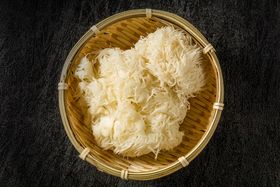7 Ways to Relieve Buttock Muscle Pain to Sit Without Suffering
Published May 9, 2023.

You may experience pain in the buttocks when sitting for many reasons, including overuse or strain of the gluteal muscles, inflammation, nerve compression or irritation, disk degeneration, or underlying medical conditions such as arthritis or sciatica. None of them makes sitting any easier.
No matter what the cause may be, buttock muscle pain can prevent you from doing everyday activities like sitting comfortably and make you place more strain on the legs. So, it's important to find ways to manage this pain effectively so it doesn't interfere with your daily tasks.
» Is sciatica causing your buttock muscle pain? See its possible causes and treatments
1. Ice and Heat Therapy
Both ice and heat therapy are considered effective for treating pain. As a general rule, ice is more suitable for acute injuries like strains or sprains, while heat is usually recommended for chronic pain.
If your buttock muscle pain is due to an acute injury, applying ice will reduce the swelling and numb the area, providing pain relief. Try applying a cold pack or ice wrapped in a towel to the affected area several times a day for 20–30 minutes at a time. However, if your buttock muscle pain is chronic, heat therapy will help relax the muscles, increase circulation, and relieve pain. You can apply a heating pad, hot water bottle, or warm towel to the affected area for 20–30 minutes at a time, several times a day.
2. Get Sufficient Rest
Properly resting will give you injured buttock muscle the time it needs to heal and recover. Resting helps reduce any existing inflammation and prevent any additional stressful activity that may aggravate the muscle further and cause more pain.
While important for managing buttock muscle pain, resting is an additional treatment that must be used with other approaches like ice and heat therapy for optimal results.
» Discover the best ways to improve deep sleep
3. Do Stretching Exercises
Sometimes, the buttock muscle pain occurs due to tight muscles. In such cases, stretching can lengthen the muscles and reduce tension to alleviate the pain. Stretching also increases the blood flow to the buttocks, promoting healing and recovery.
What's more, doing stretching exercises can reduce the risk of future buttocks muscle pain by making the gluteal muscles more flexible and less prone to strain or injury. Some effective stretching exercises for the buttock muscles include:
- Lunge stretch
- Figure-4 stretch
- Seated pigeon stretch
- Butterfly stretch
- The quads and hamstrings stretch
4. Incorporate Massage
Massage can help address buttocks muscle pain resulting from muscle tightness or spasms. It reduces muscle tension, promotes relaxation and improves circulation, which can promote healing and recovery. To make your massage as effective as possible, you can try using aids like foam rollers.
While self-massage techniques can help relieve pain, it's best to turn to a professional to make sure you're targeting the affected area the right way. A licensed massage therapist can perform a special massage suitable for the specific problem, like deep tissue massage.
5. Over-the-Counter Pain Relievers
Pain-relieving medications like ibuprofen and naproxen can help reduce any pain and inflammation in the buttocks. However, before you start taking any new medication, make sure you adhere to the recommended dosage and follow instructions from a medical professional to avoid any negative effects.
6. Lifestyle Changes
Making certain lifestyle changes can help reduce stress on the buttock muscles and prevent future buttock muscle pain, in addition to accelerating healing. For example, you can try becoming more physically active, maintaining a good posture, and avoiding prolonged sitting or standing.
» Learn more: Surprising everyday habits causing you sciatic nerve pain
7. Physiotherapy Methods
Physiotherapy is a common method of managing various types of pain, including buttock muscle problems. Your physiotherapist may use stretches, massage, and ice and heat therapy to manage the buttock muscle pain, but they also have other techniques at their disposal.
Physiotherapy methods like ultrasound, electrical stimulation, or dry needling can all help alleviate pain and reduce inflammation. You may also be prescribed physiotherapy exercises for the lower back muscles, gluteal muscles, and any other muscles that may be contributing to your buttock muscle pain.
» Try these physio exercises to manage lower back pain
Effectively Manage Your Buttock Muscle Pain
Although it's relatively common, buttock muscle pain can be a debilitating condition that can make sitting and other basic movement patterns difficult. This can disrupt your everyday activities like doing your office job by making longer sitting periods hard to handle.
However, there are several effective ways to manage the pain, including rest, pain relievers, ice and heat therapy, massage, exercises, physical therapy, and lifestyle changes. If these don't work for you and the pain persists, make sure to consult a professional and seek help.
» Discover your ideal wellness routine with our personalised quiz








